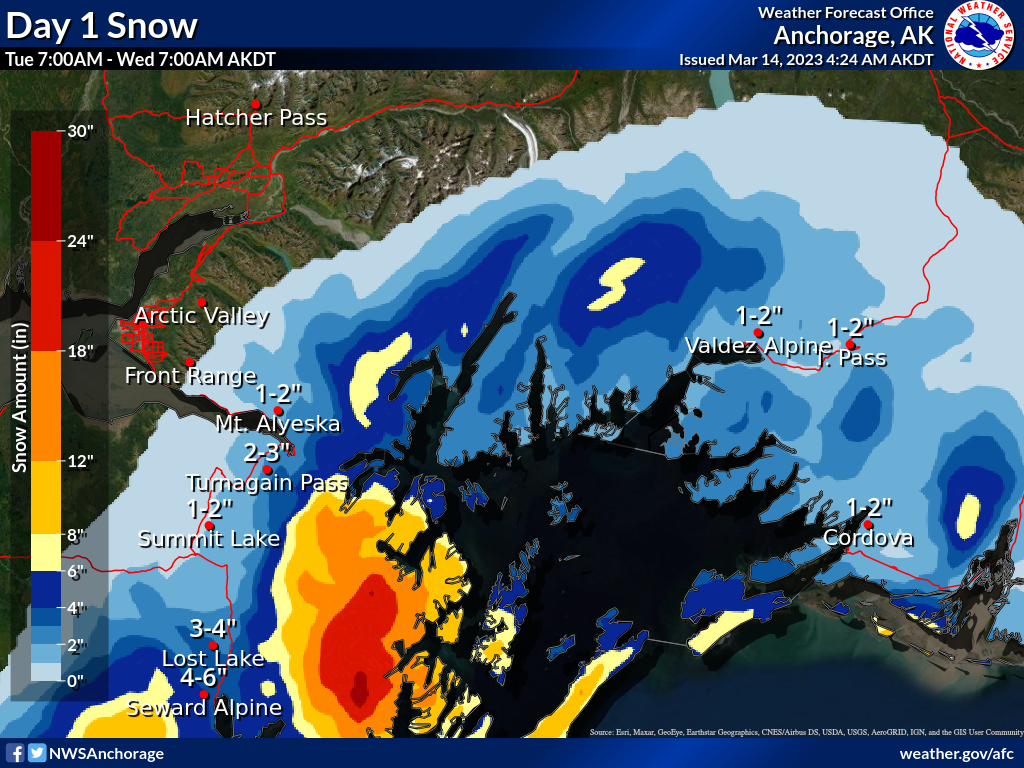Turnagain Pass
|
|
The avalanche danger will be LOW for most of the day, rising to MODERATE this evening as an approaching storm begins to impact our area. Conditions are expected to start out generally stable, but the avalanche danger will be on the rise later in the day as the weather picks up. As always, maintain safe travel protocol while you are out today, and be aware of increasing danger if the storm arrives sooner than expected.
PETE’S NORTH to JOHNSON PASS: The snowpack in this southern corner of our advisory area has a weak layer buried around 1-2′ deep that is still making it possible to trigger a large avalanche. If you plan to get out in this zone, be sure to evaluate the snow and terrain carefully before committing to steep slopes.
SUMMIT LAKE: The snowpack in the Summit Lake area is generally thinner and weaker than our core advisory area. Large human-triggered avalanches remain possible, which requires a more cautious mindset while choosing terrain.
Turnagain Pass Avalanche Awareness Day – this Saturday!
On March 18th swing by the Turnagain Pass moto lot on your way to or from your backcountry ride or ski!! Test your beacon skills, chow down on hot dogs, and bring your questions for CNFAIC forecasters. The Alaska Avalanche School will be there along with a chance to demo snowmachines from Alaska Mining and Diving Supply and Anchorage Yamaha and Polaris. More details HERE


